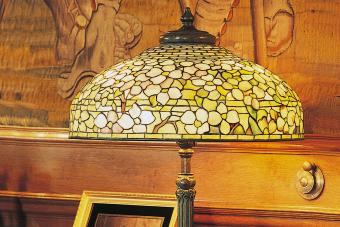
Antique piano values vary widely according to many different criteria. If you have a vintage piano you may wonder what it might be worth.
What Determines Antique Piano Values?
An antique piano is one which is at least 100 years old. Like antique books, antique pianos are not worth a lot of money just because they are old. In actuality these old instruments may be worth very little at all. Most antique, upright pianos are worth $500 or less in very good condition.
This is because a piano is actually a machine. Each of the parts have been submitted to wear throughout the life of the piano. This means that each of these parts may need specialized restoration to bring them back to their usefulness. That kind of work can cost the owner a lot of money.
Restoring and retuning a piano can easily cost $2,500 or more. Even when fully restored the piano won't play like a new piano, nor will it have the clear sound. If you want an antique piano as a showpiece in your vintage home then it is fine to get one. However, if you are looking for a piano that can be used for a serious pianist you will probably want to put your money into a new piano.
If you are curious about what your antique piano might be worth you can consult the chart at Piano World.
Description of Condition
If you are going to be able to find the value of your piano you will need to understand the terms that appraisers use to describe condition.
Mint - This means the piano has been rebuilt and refinished (R & R). It is in excellent condition both mechanically and aesthetically. It looks new and plays new.
Like New - The piano looks great. It is free of blemishes, nicks, or scratches and shows little sign of use. It is in excellent mechanical condition.
Excellent - This means that the piano needs no reconditioning. It looks good, has a clean string compartment, and has no visible wear or defects. There should be no dents or rust. There may be tiny scratches or nicks in the wood.
Very Good - The piano has no major problems. The finish may have a few minor blemishes but there will not be mechanical problems. The piano will be very clean.
Good - The piano needs some reconditioning. It may have small dents or scratches and it may be dirty.
Fair - A piano in fair condition means that there are mechanical defects but the instrument still plays. The piano is scratched, chipped, dented, warped, and may have chipped ivory on the keys. It will need professional repair.
Where to Find Piano Restorers
There are people and companies that specialize in the restoration of vintage pianos. This is not an inexpensive route and you should understand what can and cannot be accomplished before you get the restoration done. If in doubt get a second opinion.
Decorating with an Antique Piano
Of course, you may just want the look of a beautiful piano and antique piano bench in your parlor. There is nothing wrong with buying a beautiful antique piano for display.
Here are a few tips to help you get started:
- Look for a piano that is well carved and fits the era of your home.
- In Victorian homes pianos were often draped with shawls to keep the dust off.
- Piano babies, figurines that looked like children, were used to hold the shawl in place.
- There were often candelabras or oil lamps atop the piano as well to give light to the player.
- You can find old sheet music to display on your piano. It is not usually expensive and adds a nice touch.
- A sheet music cabinet nearby can add authenticity to your historic room.
Whether you have your piano completely restored or choose to use it as display, an antique piano is an eye-catching addition to any home. While antique piano values may not be high, they are still a lovely reminder of the past.







